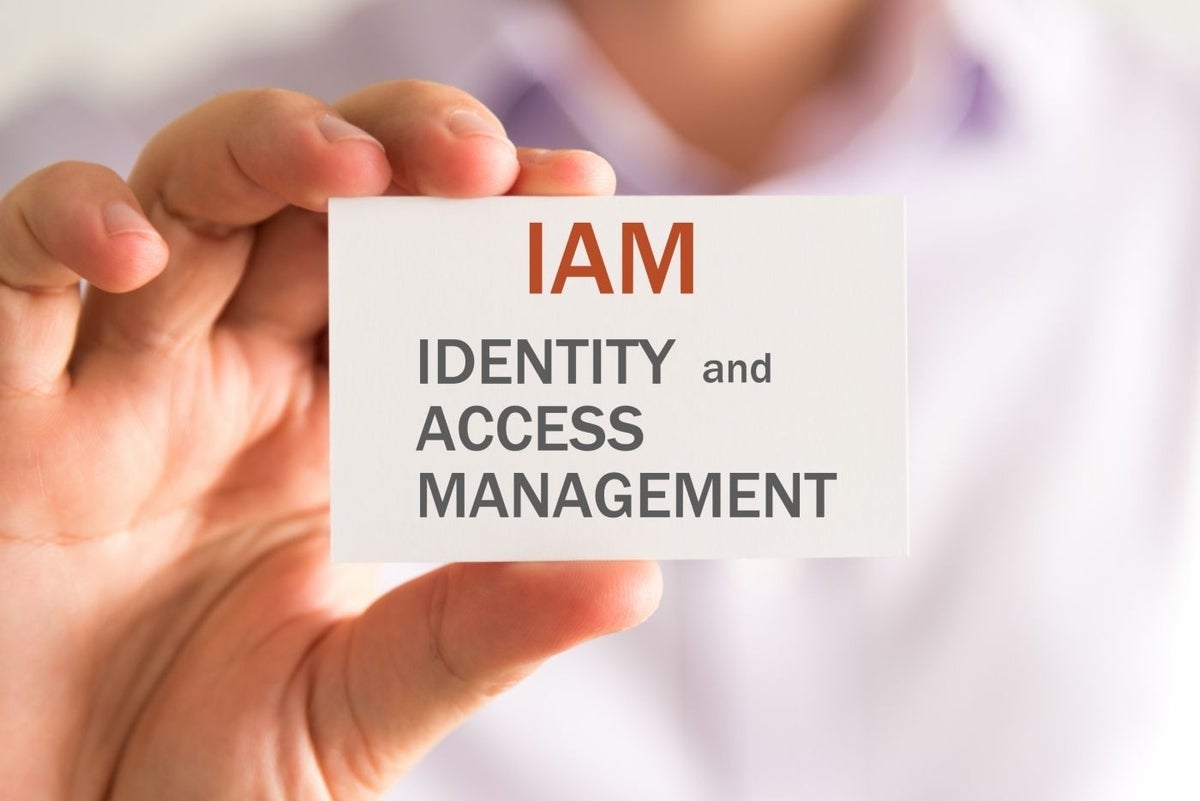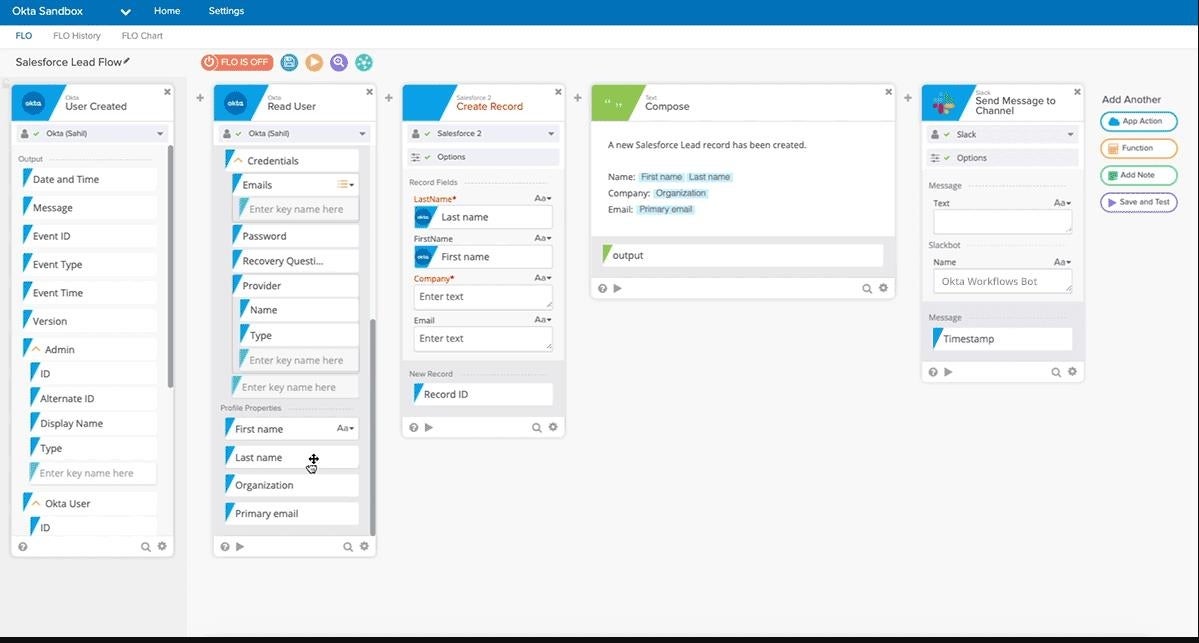- Learn with Cisco at Cisco Live 2025 in San Diego
- This Eufy robot vacuum has a built-in handheld vac - and just hit its lowest price
- I highly recommend this Lenovo laptop, and it's nearly 50% off
- Disney+ and Hulu now offer prizes, freebies, and other perks to keep you subscribed
- This new YouTube Shorts feature lets you circle to search videos more easily
Auth0 vs Okta (2024): Which IAM Software Is Better?

Due to remote work becoming the norm and new devices connecting to corporate networks each day, more businesses are looking for identity and access management (IAM) solutions to secure their organization’s cloud and web-based software. Auth0 and Okta are powerful IAM tools with distinct strengths that solve this problem.
Auth0 is a cloud-based authentication and authorization platform that offers key features of IAM, including multi-factor authentication (MFA) and single sign-on (SSO). Auth0 was designed for developers who understood the importance of flexible, customizable and scalable IAM solutions. In comparison, Okta uses simple modular components known as Platform Services to create secure connections between people and technology.
Despite Okta’s acquisition of Auth0 in 2021, their capabilities, features and pricing differ. In this review, we conduct a side-by-side comparison of the two solutions to help you determine which one best suits your needs.
Auth0 Vs. Okta: Comparison
Auth0 and Okta offer similar functionality. For example, both tools provide simple user management, multi-factor authentication and robust security features. However, the key difference perhaps lies in how Auth0 and Okta approach identity.
| Features | ||
|---|---|---|
| Single sign-on | ||
| Passwordless capabilities | ||
| User management | ||
| Customization | ||
| Multi-factor authentication | ||
| Third-party integrations | ||
| Lifecycle management | ||
| Best for | ||
| Starting price | ||
|
|
Auth0 and Okta pricing
While Auth0 is now owned by Okta, their pricing approach still differs. Auth0’s pricing is based on the number of monthly active users and use case (B2B or B2C). Meanwhile, Okta’s pricing is determined by the individual product you choose.
Auth0 has four plan options: Free, B2C (essentials & professional), B2B (essentials & professional) and Enterprise.
- Auth0 Free
-
- Free forever.
- Allows up to 7500 active users.
- Unlimited logins.
- Auth0 B2C Essentials
- Ideal for basic projects or small applications.
- 500 active users per month cost $35/month.
- 30,000+ users require a special quote from vendor.
- Users can have one production tenant, up to seven account admins and up to five actions.
- Auth0 B2C Professional
- Pricing starts at $240/month for 500 users.
- Has two production tenants, up to 10 actions and admins roles.
- Auth0 B2B Essentials
- 500 active users in this plan cost $150/month.
- Has one production tenant, 1,000 M2M tokens and up to seven account admins.
- Auth0 B2B Professional
- Best for teams and projects that need extra security.
- Offers two production tenants, includes admin roles, up to 10 actions + everything in B2B Essentials plan.
- Pricing is only available upon request.
- Enterprise plan
- Covers everything in both Essential and Professional plans.
- Contact the vendor for a quote.
Okta offers a product-tiered pricing plan — Customer Identity Cloud and Workforce Identity Cloud. Users are required to browse products and price points that make the most sense for their organization and then contact sales to get started.
Feature comparison: Auth0 vs. Okta
Auth0 and Okta platforms offer many features with different levels of functionalities. Below is a deep dive into how the features compare to each other.
Single sign-on
Both Auth0 and Okta offer single sign-on built into each platform. Auth0 enables configuration with any enterprise connection via Active Directory, Lightweight Directory Access Protocol (LDAP), Active Directory Federation Services (ADFS), Security Assertion Markup Language (SAML) and more. Developers can build any integration required to implement SSO across their enterprise.
Okta offers a network of 7,000+ pre-built integrations to choose from so businesses can enable SSO or Adaptive SSO quickly. The platform also offers SAML and OpenID Connect integrations, as well as LDAP support.
Multi-factor authentication
Auth0’s multifactor authentication includes push notifications, SMS notifications, voice notifications, one-time passwords and more. The MFA can be customized to fit an organization’s needs.
For example, Auth0 provides step-up authentication, allowing businesses to restrict access to more sensitive apps. The platform also offers adaptive MFA, ensuring MFA is only presented within a login that poses a security risk.
Okta offers the same MFA methods as Auth0. The platform also delivers adaptive MFA, enabling users to create access policies based on risk factors. Businesses can enable password-only authentication for low-risk log-ins and passwords, plus push notifications for medium-risk log-ins.

Passwordless authentication
Passwordless authentication is the future, and many companies are working toward it in hopes of boosting security and improving the user experience. Auth0 and Okta have features enabling passwordless authentication. For example, Auth0’s passwordless authentication is captured under the platform’s Universal Login, a feature that enables developers to customize the login page.
In comparison, Okta enables passwordless authentication through Okta Fastpass, a passwordless authentication method that can satisfy a medium or high assurance level (when combined with biometrics). Okta also supports passwordless authentication using email-based magic links, factor sequencing, social logins, one-time passwords (OTP) and passkeys.

Lifecycle management
Okta streamlines secure provisioning and de-provisioning by fetching user details from your active directory automatically, eliminating the need for manual processing by IT team members during onboarding and offboarding. Its workflows automate IT processes for user lifecycle management without requiring coding.

In contrast, Auth0 offers a user management module focused on managing user profiles and collecting attributes primarily tailored for customer access and identity management rather than for internal users.
Auth0 pros and cons
Using Auth0 comes with many benefits. However, there are still some drawbacks that may arise.
Pros of Auth0
- Supports anonymous user and bot detection.
- Simplifies user authorization process.
- Has enterprise support.
- Easy integration with third-party vendors.
- Offers passwordless authentication.
- Has a free trial.
Cons of Auth0
- Might be pricey.
- May not be suitable for inexperienced developers.
Okta pros and cons
Here are some of the notable advantages and cons of using Okta for your IAM.
Pros of Okta
- SSO provides security reports in real-time.
- Centralized user management.
- Designed for developers with an API-first architecture.
- Access 14 SDKs with language-specific libraries.
- Has a free trial.
Cons of Okta
- Configuration and customization may be complex.
- Has high contract minimums, so it may not be the best fit for small businesses.
Methodology
Our review of both IAM platforms was based on the primary data available on each product’s website. To narrow things down, we focused on core features such as customizability, third-party integration, passwordless capabilities and ease of use. We supplemented our findings with user feedback from credible sources like Gartner Insight.
Should your organization use Auth0 or Okta?
Auth0 and Okta are quality solutions for enabling IAM within any business. However, for app development companies or smaller businesses with more complex IAM infrastructure needs, Auth0’s extensibility and developer-focused platform might be the better option.
Okta’s existing library of integrations and pre-built components make the platform a great choice for larger businesses that need to get their IAM strategy up and running fast.

